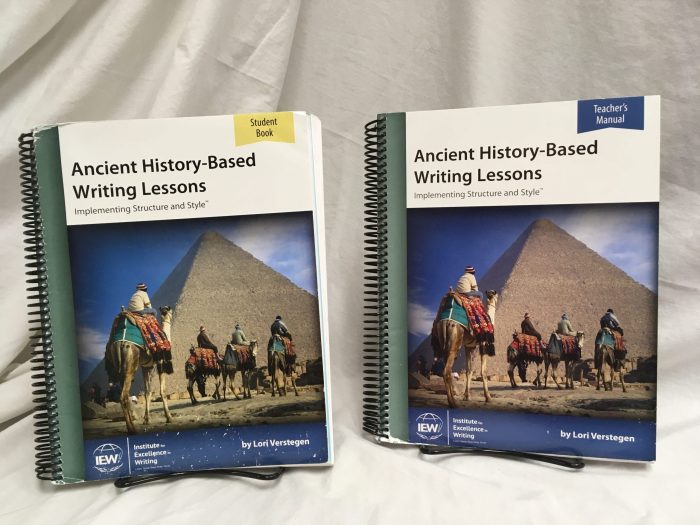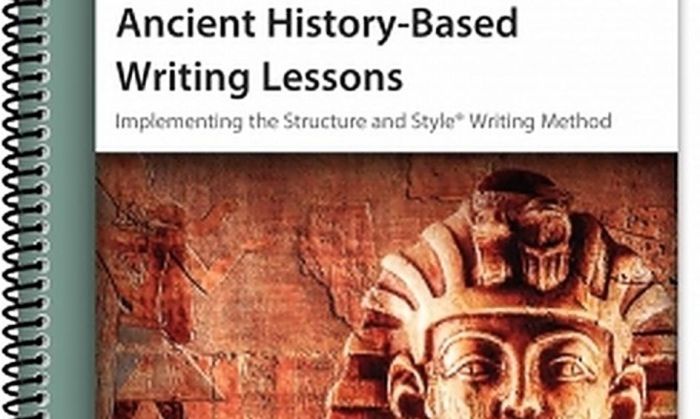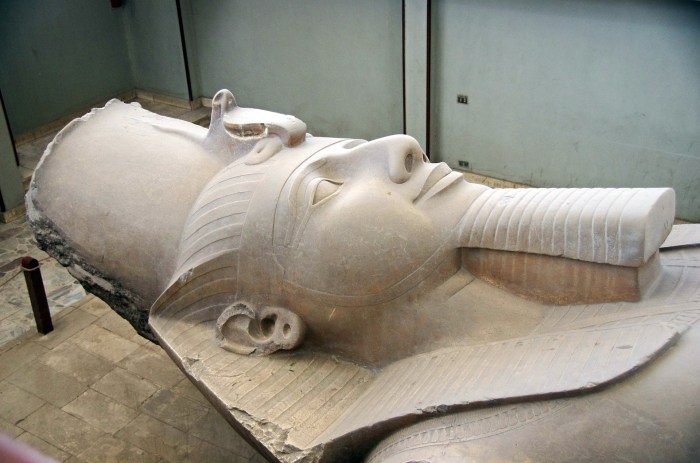Embark on an enlightening journey through iew ancient history writing lessons, where the echoes of the past reverberate with profound wisdom and invaluable insights. This captivating exploration delves into the origins, methods, types, content, analysis, and enduring lessons embedded within ancient historical texts, offering a unique lens through which we can decipher the complexities of our shared human experience.
Ancient history writing emerged as a pivotal milestone in human civilization, providing a tangible record of our ancestors’ triumphs, tribulations, and enduring legacies. From the clay tablets of Mesopotamia to the papyrus scrolls of Egypt, these written accounts offer a window into the minds and hearts of those who shaped the world we inhabit today.
Historical Context

The origins of ancient history writing can be traced back to the development of writing systems in various civilizations around the world. The earliest forms of writing emerged as a means of record-keeping and communication, and over time, they evolved into more complex systems capable of expressing historical narratives and preserving knowledge.
Among the earliest civilizations to develop writing systems were the Sumerians in Mesopotamia, the Egyptians in North Africa, and the Indus Valley Civilization in South Asia. These civilizations developed cuneiform, hieroglyphics, and the Indus script, respectively, which were used for administrative purposes, religious texts, and historical accounts.
Examples of Early Historical Texts
Some of the earliest known historical texts include:
- The Sumerian King List, which records the names and reigns of Sumerian kings from the earliest dynasties.
- The Egyptian Palermo Stone, which provides a chronological record of the reigns of early Egyptian pharaohs.
- The Indus Valley seals, which contain short inscriptions that may have been used for administrative or religious purposes.
Methods of Ancient History Writing
In ancient times, various materials were used for writing, including papyrus, parchment, and clay tablets. Papyrus was made from the stem of the papyrus plant, while parchment was made from animal skin. Clay tablets were used in Mesopotamia and other regions.
Different writing styles and scripts were also used in ancient times. The Egyptians used hieroglyphics, which were a system of writing that used pictures to represent words or sounds. The Babylonians used cuneiform, which was a system of writing that used wedge-shaped marks pressed into clay tablets.
The Greeks and Romans used an alphabet, which was a system of writing that used letters to represent sounds.
Scribes and the Creation of Historical Texts
Scribes were professional writers who were responsible for creating and copying historical texts. They were often employed by governments, temples, and other institutions. Scribes used a variety of writing materials and styles, depending on the time and place in which they lived.
Types of Ancient Historical Texts

Ancient historical texts encompass a diverse range of genres, each serving specific purposes and targeting distinct audiences.
Chronicles
Chronicles are chronological narratives that record significant events year by year or reign by reign. They provide a comprehensive overview of historical developments and often include genealogies, lists of officials, and astronomical observations. Examples include the Babylonian Chronicle and the Chinese Bamboo Annals.
Annals
Annals are similar to chronicles but are more concise, focusing on brief entries for each year. They often record important events, such as military campaigns, natural disasters, and royal accessions. Examples include the Roman Annales Maximi and the Assyrian Eponym List.
Biographies
Biographies focus on the life and achievements of a single individual, typically a ruler, general, or religious figure. They provide detailed accounts of their subject’s personal life, political career, and impact on history. Examples include Plutarch’s “Parallel Lives” and Suetonius’s “Lives of the Caesars.”
Content of Ancient Historical Texts: Iew Ancient History Writing Lessons

Ancient historical texts provide a rich source of information about the past, offering insights into the political, military, social, and cultural aspects of ancient societies. These texts often narrate significant events, record the deeds of rulers and leaders, and document the customs and traditions of ancient peoples.
Political and Military Events
Ancient historical texts frequently chronicle political and military events, including the rise and fall of empires, wars, and diplomatic relations. For instance, the Greek historian Thucydides’ “History of the Peloponnesian War” provides a detailed account of the conflict between Athens and Sparta, while the Roman historian Livy’s “Ab Urbe Condita” (From the Founding of the City) narrates the history of the Roman Empire from its origins to the reign of Augustus.
Social and Cultural Events
In addition to political and military history, ancient texts also shed light on social and cultural aspects of ancient societies. They describe the daily lives of people, their customs, beliefs, and artistic achievements. For example, the Chinese historian Sima Qian’s “Records of the Grand Historian” includes biographies of notable individuals, accounts of cultural practices, and descriptions of the development of Chinese civilization.
Analysis of Ancient Historical Texts
Analyzing ancient historical texts presents numerous challenges. These texts are often fragmentary, incomplete, and written in languages that are no longer spoken. Additionally, the authors of these texts often had their own biases and agendas, which can make it difficult to determine the accuracy and reliability of their accounts.
It is important to consider the context in which ancient historical texts were written when analyzing them. The author’s purpose, the intended audience, and the political and social climate of the time can all influence the content and tone of the text.
It is also important to be aware of the author’s biases and to take them into account when evaluating the text’s reliability.
Challenges of Analyzing Ancient Historical Texts, Iew ancient history writing lessons
- Fragmentary and incomplete nature of the texts
- Use of languages that are no longer spoken
- Biases and agendas of the authors
Importance of Considering Context and Biases
- Author’s purpose and intended audience
- Political and social climate of the time
- Evaluating the text’s reliability
Examples of Using Ancient Historical Texts
- Reconstructing the history of ancient civilizations
- Understanding the beliefs and values of ancient peoples
- Gaining insights into the social and political structures of ancient societies
Lessons from Ancient History Writing
The study of ancient history writing offers valuable lessons for historians and scholars today. By examining the methods, content, and analysis of ancient historical texts, we can gain insights into the past and its relevance to the present.
One of the most important lessons is the significance of preserving and studying historical texts. These texts provide a window into the minds and cultures of ancient civilizations, allowing us to understand their perspectives, values, and beliefs. By preserving these texts, we ensure that future generations can learn from the experiences of the past.
Importance of Preserving Historical Texts
- Provides a record of past events, allowing us to reconstruct historical narratives.
- Preserves cultural heritage, showcasing the values, beliefs, and traditions of ancient societies.
- Serves as a source of knowledge for historians, archaeologists, and other scholars.
How Ancient History Writing Informs Our Understanding of the Present
- Offers insights into human nature, revealing patterns of behavior and societal dynamics that are still relevant today.
- Provides lessons from past mistakes, enabling us to avoid repeating similar errors.
- Inspires us with examples of courage, resilience, and innovation, motivating us to strive for a better future.
Popular Questions
What are the key characteristics of ancient historical texts?
Ancient historical texts are typically characterized by their focus on political, military, social, and cultural events, often written from the perspective of rulers, scribes, or other elite individuals.
How do we analyze ancient historical texts?
Analyzing ancient historical texts requires careful consideration of their context, biases, and limitations. Historians employ various methods, including textual criticism, source criticism, and archaeological evidence, to interpret and understand these texts.
What are some examples of ancient historical texts?
Examples of ancient historical texts include the Epic of Gilgamesh, the Code of Hammurabi, the Annals of Thutmose III, and the works of Herodotus and Thucydides.